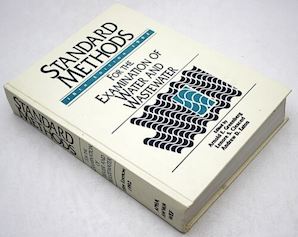
Curated with aloha by
Ted Mooney, P.E. RET

The authoritative public forum
for Metal Finishing 1989-2025

-----
Analysis of phosphate in a phosphoric/citric acid mixture
Q. Hi everyone,
I am trying to figure out how to analyze the acid phosphoric content in a citric/phosphoric acid mixture. It also contains glycol in it. Do any one has a clue how to do it? I appreciate a lot your help. My best regards. Saludos
Plating shop - SLP, Mexico
September 8, 2009
A. If you have dissolved metal in it also, I doubt if there is any titration method that would work. You could try titrating the similar strength raw acids bu them selves and then titrating a virgin mixture. Since the phosphoric has 3 eq points, I rather doubt it. You should use recording equipment or take huge amounts of readings.
James Watts- Navarre, Florida
September 10, 2009
![]() Thanks James, I was afraid of such inconvenience. Thanks again for the answer. Mil gracias
Thanks James, I was afraid of such inconvenience. Thanks again for the answer. Mil gracias
Plating Jobshop - SLP, Mexico
September 11, 2009
AWWA

on AbeBooks
or eBay or
Amazon
(affil links)
A. There is a pretty good gravimetric method for phosphate that I used some years ago to determine phosphoric acid in a phosphoric/propionic acid mixture. I regret to say that I don't have the details of it in front of me. You can likely find such with a literature search. It involves precipitating a complex ammonium phosphomolybdate. I do recall that control of acidity, and careful washing of the precipitate are critical.
There are also good colorimetric methods for phosphate. However, they are only applicable to samples with PO4 3- (as P) up to about 0.5 mg/l, which means that you would need to dilute the sample by many orders of magnitude to get to the answer. These methods are presented in detail in
<== 'Standard Methods ...'.

Dave Wichern
Consultant - The Bronx, New York
September 15, 2009
? Dave, I have not been in the Standard Methods in many years, but I seriously doubt if it has a method for the exact amounts of those two acids in a solution with metals and accelerators, promoters and inhibitors. I would be happy to be wrong.
James Watts- Navarre, Florida
September 16, 2009
A. If one would to do a very careful volumetric dilution, I think one would get a pretty good phosphate answer. I believe that those other solution elements you mention would be diluted out of relevance.
To be safe, the method of additions could be used.

Dave Wichern
Consultant - The Bronx, New York
September 19, 2009
A. Dave,
The method you mention is one of several classical methods for determination of P in ferrous alloys, and is well-proven and accurate.
It should be used by somebody with some experience of manipulations in wet-chemical laboratories, else they would not be able to handle the procedure.
It would be useful to have a bit of an idea of the P level in the OP's solution. A useful amount of P to have in the analysis sample (which in the case of a liquid would determine the most appropriate volume to take after a volumetric dilution) is 0.5 to 2 milligrams (and hence 1.5 to 6 milligrams of H3PO4).
Guillermo, do you have laboratory facility and personnel to take this further?

Bill Reynolds [deceased]
consultant metallurgist - Ballarat, Victoria, Australia
We sadly relate the news that Bill passed away on Jan. 29, 2010.
September 22, 2009
![]() Bill, Dave,
Bill, Dave,
Thanks a lot for your answers. I have a wet lab, but not as complete as I would like. One important device I am missing is the colorimeter. Bench top pH, ORP, conductivity are in place. Titration and gravimetric as well.
Thanks again. Mil gracias!
jobshop - San Luis Potosi, Mexico
September 28, 2009
Q, A, or Comment on THIS thread -or- Start a NEW Thread